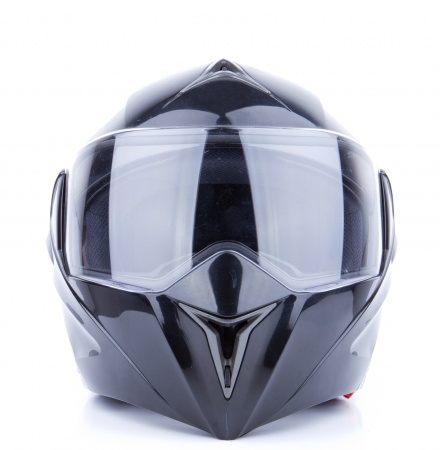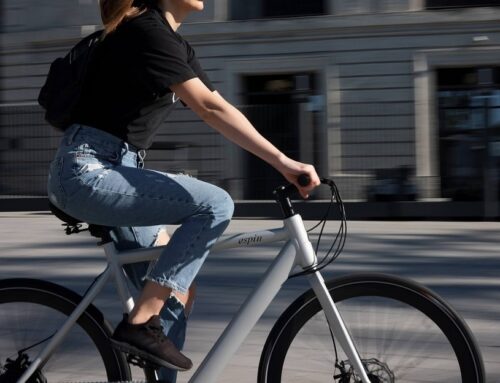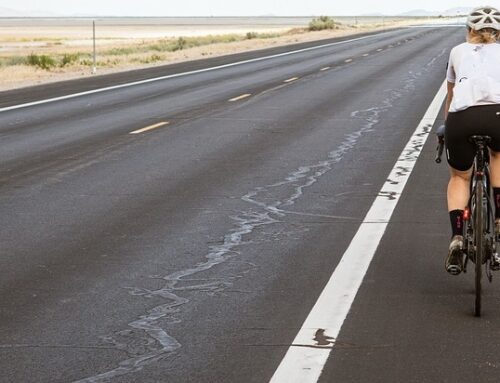By Indiana Lawyer – William Bill Hurst
Motorcycle accidents can be devastating. On July 22, sixteen year old Ryan Smith was riding a bicycle on his way to work when he was struck by a van. As a result of the accident Ryan went into a coma which he remains in to this day. According to his father, Ryan was always told to wear a helmet but he was young and his hair was his life. As his father put it, he had the “not going to happen to me attitude” which made him think he was invincible. Had he been wearing a helmet would this have prevented this serious and permanent life altering injury? The answer is that statistically, probably.
Crash Facts and Helmet Use
In the United States in 2011 there was a loss of 677 lives in bicycle/motor vehicle crashes. 91% of bicyclists killed 
According to the Bicycle Helmet Safety Institute 91% of bicyclists killed in 2009 reportedly were not wearing helmets. Additionally studies have linked helmet use to the reduction of risk of head injury by 85%. In Indiana motorcycle helmets are required for all motorcyclists under the age of 18. Until we have better exposure measures we don’t know just to what extent bicycle risk compares to other modes of travel but they seem to be increasing as bike riding interest expands in the population.
The most recent statistics regarding motorcycle crashes/injuries accumulated by the US National Highway Traffic Safety Administration (NHTSA) indicates that motorcycles have a higher fatality rate per unit of distance traveled when compared to automobiles. For each mile traveled the motorcyclists risk of fatal crash is 35 times greater than a passenger in a car. Interestingly motorcycle riders aged 45 and over are around 20 times more likely killed than other drivers of the same age. The usual explanation other than alcohol for causation of a motorcycle accident is the failure of a motorist to detect and recognize motorcycles in traffic.
Between 2008 and 2010, 42% of all fatalities in motorcycle accidents were not wearing helmets. It is estimated by NHTSA that $1.4 billion in economic losses would be saved in 210 if all riders wore helmets.
Moped and scooter crash outcomes in the United States were last reported many years ago. However, the two-wheelers have experienced a resurgence in popularity and their sales have increased dramatically. A recent study of North and South Carolina showed both moped accidents and fatalities are increasing steadily. Following the collision of the moped with a motor vehicle there is a 4% chance of lethal injury and a 31% of a severe injury.
In one study in Florida (by the Florida Traffic Crash records database) identified crashes involving mopeds and scooters between 2002 and 2008. A total of 5,660 moped crashes were evaluated. The results were that more than 90% of the drivers involved in moped or scooter crashes were uninsured and 70% of the drivers did not wear helmets.
Why Don’t Riders Wear Helmets?
On July 22nd a young many by the name of Ryan Smith was seriously injured when he was in a collision as he rode to work. He has remained in a coma since the accident and his father is encouraging all cyclists to wear a helmet. His father relates that his son didn’t want to wear a helmet, he didn’t want to mess up his hair.
The violent contact with two-wheelers and other objects in these crashes creates a significant risk of severe injury or fatality, often the result of a head injury. So why don’t these people wear helmets? Various excuses are given for not wearing a helmet which include helmets cause tunnel vision, headaches, and cause you to bump things above your head, other people steal them because they’re not tied down, there’s no place to put them when you go into a theater, restaurant or store, the price of a helmet is too expensive, and many macho males simply think that a helmet is inconvenient and uncomfortable, or because they’re dorky and uncool. It is for these very reasons and resistance to wearing helmets that helmet laws have been enacted across the country, and in particular for people under the age of 16.
Helmet Laws
Motorcycles
In 1967 the federal government required states to enact motorcycle helmet laws to qualify for certain highway safety funds. By 1975 all but three had complied but unfortunately Congress revoked federal authority to assess penalties for non-compliance and the states began to weaken the helmet laws. 
Bicycles
With regard to bicycle helmet laws, few of our states have enacted only bicycle helmet laws. However, some localities (ordinances) do require helmet use for some or all bicyclists. 21 states, the District of Columbia, the Northern Mariana Islands and the U.S. Virgin Islands have a helmet law for bicyclists below a certain age, generally 16. Only the Virgin Islands requires helmets for all bicyclists. 29 states and Guam have no bicycle helmet law at all. With regard to wearing a helmet and riding a bicycle, Indiana does not require that a cyclist wear a helmet while riding.
Mopeds
Moped helmet laws vary widely. Several states are currently moving to tighten regulation on mopeds. In some states there are no helmet laws and you don’t even have to have a license to drive a moped. In Indiana moped operators must be at least 15 years old and must possess a Bureau of Motor Vehicles issued license. Everyone under the age of 18 is required to wear a helmet or eye protection while riding a moped.
What Good Are Helmets?
While you may not be violating a law by not wearing a helmet for all the foregoing reasons you should always wear a helmet when getting on a motorcycle, bike or moped. Better safe than sorry!
The NHTSA in 2011 estimated that helmets saved the lives of 1,617 motorcyclists in 2011 and that 703 more lives in all states could have been saved if all motorcyclists had worn helmets. Despite this report various groups promoting “bikers rights” argue that the testing standards for motorcycle helmets was created 30 years ago, and the testing does not simulate what would really happen to a motorcyclist wearing a helmet in the event of an actual accident. They argue based upon these statistics shaky foundation and the facts that a rider’s peripheral vision is affected by a helmet and there is an acute decrease in hearing caused by a helmet that helmets create greater risks than not wearing one. They argue that mandatory helmet laws are nothing more than a mandatory “dress code. The American Motorcycle Association opposes helmet mandates because they believe they have unintended consequences. Historically the enforcement of helmet mandates has siphoned away scarce funds from the effective crash preventive programs such as rider education and motorist awareness. These positions confound public safety people who are frustrated at the state of events right now. They’re seeing more people die, and there’s nothing that they can do about it!




